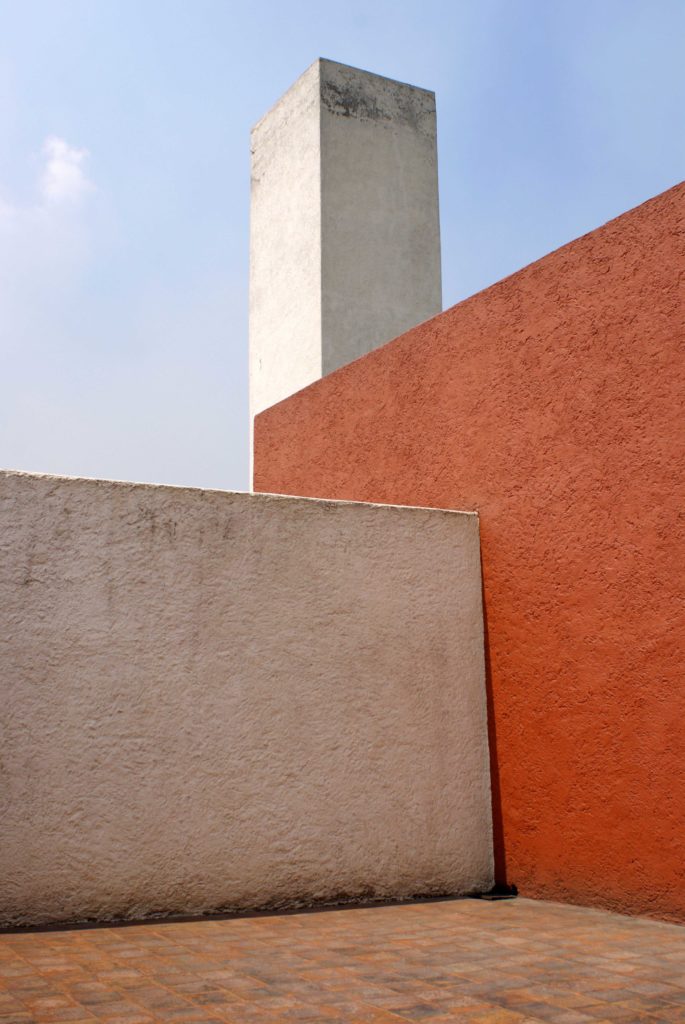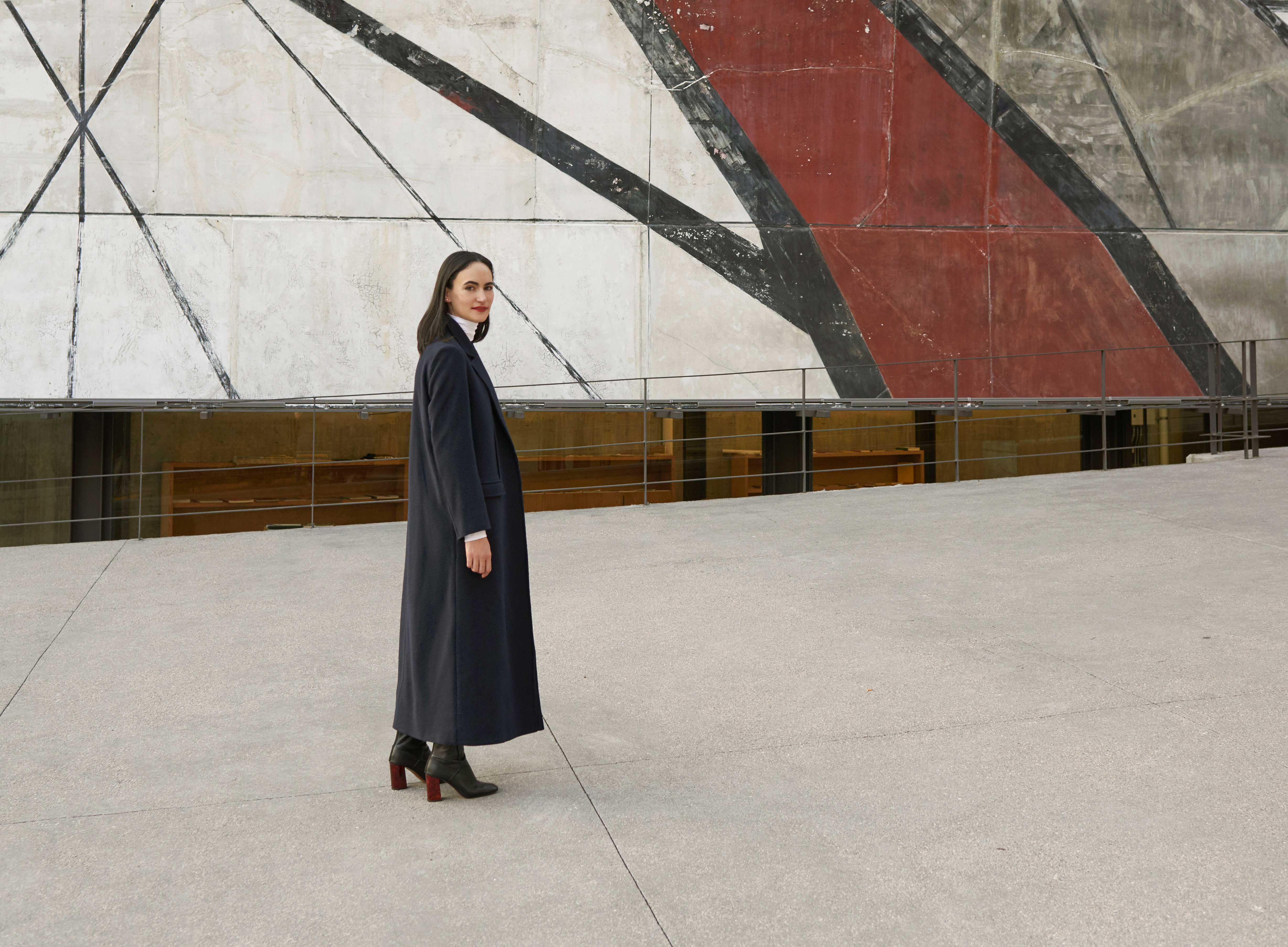Selective concealment is a typical, though often unacknowledged, function of architecture. Architectural detailing, for example, shrouds the processes and defects of construction and hides the complex mechanics of buildings. Moldings mask the ragged intersection of walls with floors and ceilings. Wallboards cover structure, plumbing, electrical wires, and insulation. In covering panel joints, tape, plaster, and paint conceal dimensioned boards behind an illusion of material uniformity. Dropped ceilings shield pipes, ductwork, and rough concrete. All of this seems practical and acceptable—almost essential—in buildings. In fact, the 20th-century architectural critic Reyner Banham asserted that these kinds of efforts “clearly satisfied one of the leading aesthetic ambitions of modern architecture….” Hung ceilings and hidden ductwork—“concealed power,” he called it—offered visual purity despite the clutter of modern service systems.
But Banham also pointed out the intellectual and ethical incongruity of this achievement in modern architecture: “It flouted one of its most basic moral imperatives, that of the honest expression of functions.” By the time Banham wrote these words in the late 1960s, “honesty” had been well established as one of architecture’s fundamental obligations. This dated back at least to John Ruskin, who wrote in “The Lamp of Truth” in 1849, “We may not be able to command good, or beautiful, or inventive, architecture; but we can command an honest architecture.” “What is there but scorn,” he asked, “for the meanness of deception?”
Ruskin’s Victorian moralizing may seem overwrought, but his attention to the corrosive effects of small deceits still seems relevant. Even if we become inured to the regular untruths in architectural detailing, we should still scorn architecture’s larger efforts at deception. We might accept the mild untruth of moldings, for example, while we still abhor the capacity of well-composed architecture to mask duplicity or hide suffering. The challenge for architects and students of architecture is to remain attuned, as Ruskin was, to the ethical capacities of architecture and to ensure that aesthetic ambitions do not obscure decency or foster inequity. We must acknowledge that design, even at the scale of the smallest detail, is not morally or politically neutral.
How can architectural interventions help recognize, reduce, and redistribute the problems faced by domestic workers?
who, together with Xavier Nueno, seeks to highlight ways in which iconic Mexican architects had erased the spaces of domestic labor.
Frida Escobedo, who is teaching an architecture studio at the Graduate School of Design this semester that is supported by Knoll, Inc., explains the studio’s origin as a moment of discerning architectural deceit. As a participant in the 2007 Ordos 100 project to design a house in Inner Mongolia (according to ArchDaily: “one hundred 1,000-sqm villas designed by 100 hip architects in 100 days”), she noticed an oddity in the architectural program: The single-family house was to include two kitchens. But to Escobedo, “Two kitchens equals two households in one house, and it just stuck in my head.” It implied a household of hidden servants who would prepare the food in one kitchen so that it could be presented in the other kitchen—a space of entertainment for the homeowners. The project brief thereby suggested that the architects should render one household invisible, even as the house itself would become a showpiece for the architecture firm and for the wealthy family who purchased it.
Escobedo began to focus on the systematic, global tendency of architecture to conceal spaces of domestic labor—and the people (mostly women) who work in them—a process she calls “invisibilization.” Earlier this year, Escobedo highlighted this in Domestic Orbits, a detailed study of five modern domestic buildings in Mexico. The book offers “a counter-history of Modern architecture that questions the duality among the visible/invisible, those who count and those who do not.” Xavier Nueno, her collaborator on both the project and the GSD studio that bears the same title, explains that the study’s aim is to highlight how “iconic Mexican architects” had “erased the spaces of domestic labor.” Using techniques of mapping, Escobedo and Nueno show that the forces that bind together the owners of the houses and their domestic laborers also serve to keep them apart in spatially distinct domains, just as a dynamic tension causes a celestial body and its satellites always to circle each other.

In some cases, as at the Casa Estudio Luis Barragán, space for domestic labor becomes embedded in the house, nesting one hidden household within another. In other cases, housing for domestic workers spins off into other domains within the city—as in the wealthy Mexico City neighborhood of Polanco, where obscure ancillary buildings contain parking and cramped servant housing. The book also points out that architectural representation of these projects, particularly published drawings, put “a veil between owners and workers,” because they almost invariably fail to show the servants’ quarters. Domestic Orbits highlights how architecture’s selective concealment of domestic space makes it complicit with great social inequities associated with gender, class, and race in Mexico.
The Domestic Orbits studio begins with Escobedo and Nueno’s historical account and extends into the realm of design. The studio brief explains that a recent political change in Mexico is likely to significantly alter the balance of forces involved in domestic labor. “In December 2018,” it says, “the Mexican Supreme Court recognized the right of domestic workers to be affiliated to social security putting an end to a long history of discrimination and invisibility.” Certainly, this will offer momentous change for a great number of people, and, because architecture was complicit in the discrimination that led to this new law, it too will need to change.
The brief asks how the consequent entry of 2.4 million workers into the formal economy will reshape not only the social dynamic in Mexico, but also the domestic and urban spaces that bring people together. Escobedo explains that because these workers provide much of the “reproductive labor” in the Mexico—cooking, cleaning, maintenance, care of the elderly, and so on—they will become increasingly visible, moving from traditionally hidden spaces into the public realm. The studio therefore asks students: “How can architectural interventions help recognize, reduce, and redistribute the problems faced by domestic workers?”
To begin answering this question, the 12 students in the studio began by mapping the spaces of domestic work in Mexico City. This has not yet been done systematically, so “it has been really challenging,” Escobedo says. But the students have been resourceful and have made some important discoveries—about the social isolation of domestic workers within dense urban blocks, the safety of these “hidden” people on public transportation, and the “invisible thresholds” that limit their movement in the city. The students presented this work in the form of analytical maps that will orient their thinking and help create narratives about the changing situations of domestic workers in the city.
After a month of research, the students embarked on a week-long trip to Mexico City. Their first stop was the Bordo Xochiaca, an immense landfill decommissioned and capped in 2006 as part of an effort to improve a vast impoverished area of the city. Escobedo explains that the tour began there because “it is important for students to understand the periphery—the ‘informal’ but highly structured space” in the city’s poorer districts. “Mexico City is several cities in one,” she says. One aim of the group’s visit is to seek out the thresholds between sectors of the city, the “dark zones and gaps” where the problems of domestic workers are acute and where architectural interventions might be most effective. The itinerary also included public markets, modernist housing projects by Mario Pani and others, the Casa Barragán, and offices of architects who are also working on the issues presented by the studio.
Back in Cambridge, the students are developing intervention strategies that address and foreground the conditions of domestic laborers and “help realize the provisions made by the new law.” These might include building proposals, but also, Escobedo emphasizes, “representations of spaces, territorial organizations, utopian landscapes, policy proposals, or other forms of spatial practice.” While it addresses the specific conditions in Mexico City, the studio encourages broader speculation about how architecture operates in legal, social, and political spheres, and seeks a deeper moral imperative for architecture. Its aim, in particular, is to systematically reveal “structures of inequality” that were formerly concealed by architecture.
While the Domestic Orbits studio follows Escobedo’s long-term interests and recent research, she notes that it also reinforces and informs her evolving architectural practice. Since its inception, her firm has been “based on the idea that architecture and design represent a crucial means of posing questions and contesting social, economic and political phenomena.” As they begin to take on multifamily and social housing projects in Mexico, Escobedo and her collaborators naturally gravitate toward the difficult questions, seeking out ways to resolve hidden tensions of domestic life and investigating the roles domestic architecture plays in the social dynamic. Frida Escobedo’s work on domestic orbits—her research, teaching, and practice—seeks to refocus the moral imperative of modern architecture by underlining social conflict and confronting hidden inequities.
